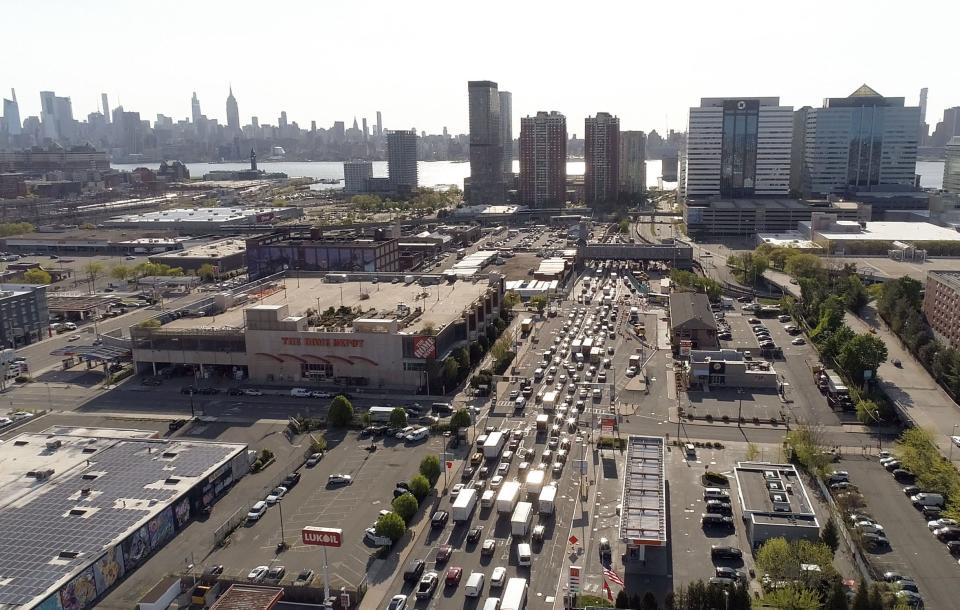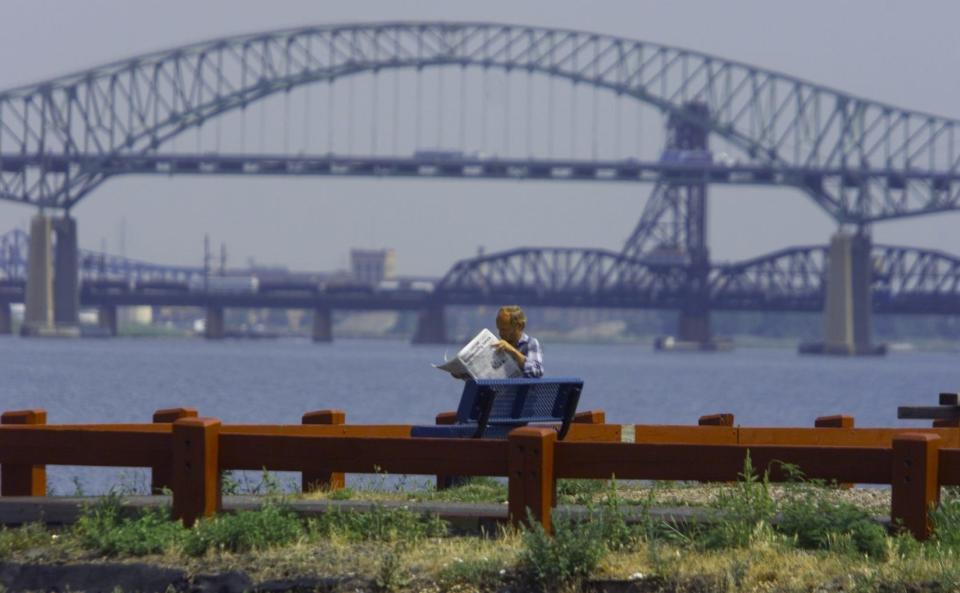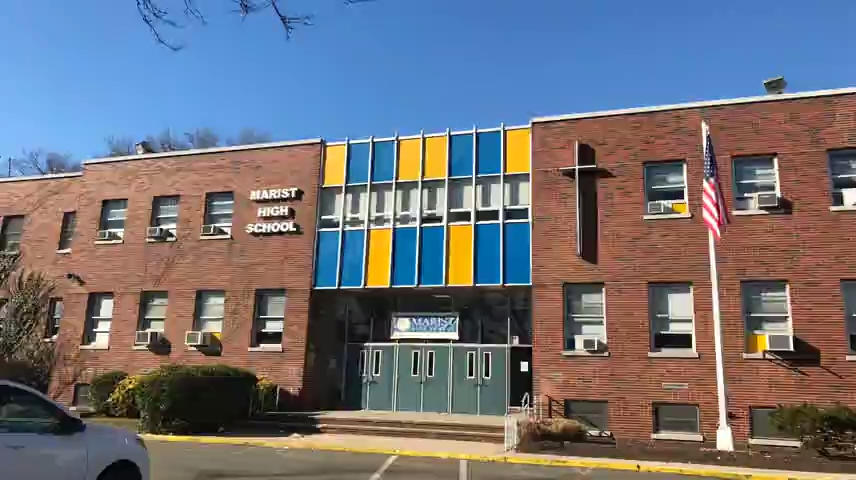NJ Turnpike Authority pushes for massive $11B widening between Newark and Jersey City
The New Jersey Turnpike Authority made its case Wednesday to proceed with part of a controversial highway widening project in Hudson County it argues will reduce congestion, improve safety and support growth expected in the region.
"The extension provides needed access to local communities, the ports and marine terminals, and Newark (Liberty International) Airport, as well as services, recreation and entertainment in Bayonne, Jersey City and Newark," according to Lisa Navarro, the Turnpike Authority's supervising engineer on the project.
She was among the experts who spoke to reporters during a briefing Wednesday to discuss the project's 274-page draft environmental report and hundreds of related documents, exhibits and appendices.
The proposal has been a flashpoint for environmentalists and some local officials who are fervently against the project, arguing it will increase pollution and congestion and that money could be better used to improve public transportation in the area.
Agency's biggest project ever
The project as a whole is an 8.1-mile portion of the Turnpike between Newark, Jersey City and Bayonne that will expand certain parts of the elevated highway and replace 29 bridges at an estimated cost of $10.7 billion, paid for through bonds paid back by tolls.
This would be the biggest project the authority has ever taken on, and more than double original estimates of about $4.7 billion, a drastic increase that officials have blamed on inflation, the cost of borrowing and the use of an old cost estimator.
"The Turnpike Authority has the right priority and is moving quickly on the most important part of this project," said Greg Lalevee, business manager with the International Union of Operating Engineers Local 825. "Replacing these decrepit bridges that are a vital freight and commuter lifeline has always been the first step of the expansion."
Opposition from environmental groups
John Reichman, of the nonprofit EmpowerNJ, which is opposed to the project, said it will make the lives of Hudson County residents worse, and the agency should consider alternatives, like rehabilitating the existing structure and putting the money toward public transportation projects, such as extending the Hudson-Bergen Light Rail line into Bergen County.
More: Three decades later, the Hudson-Bergen Light Rail line still has no Bergen spur. How come?
"The findings fly in the face of their own internal documents that show the bridge can be safely maintained and have an additional 40-year lifespan for approximately 1/30th of the cost of replacing," Reichman said, referencing a 2020 report published by Jacobs Engineering, which found rehabilitating the bridge would cost around $260 million.
However, the authors of that report recommend replacement instead of rehabilitation in order to increase the weight the roadway can handle.

"The plan to spend more than $6 billion — it’s the height of fiscal and environmental irresponsibility … it’s going to cause more pollution and more traffic," Reichman said.
Among the criticisms of the project is that the highway widening will not address congestion near the entrance to the Holland Tunnel, where eastbound lanes merge down to just two.
Turnpike officials say that they found only 21% of eastbound traffic goes to the tunnel. The majority, 56%, goes to Jersey City, and another 17% to Bayonne.
The agency is pushing the project even as plans move ahead by New York to start a congestion pricing toll on drivers entering lower Manhattan to improve air quality through reduced traffic and raise money for public transportation.
Project would not be finished until 2040
The program is being broken up into phases. The first, which is considered the biggest priority and estimated to cost $6.2 billion, is 4.1 miles of elevated highway between Interchanges 14 and 14A, which will involve replacing ramps and 15 bridges, including the Newark Bay Bridge.
Construction on the first phase is expected to begin in 2026 and end around 2036. The full program is expected to be completed around 2040.

"Because of the age of the 29 bridges that comprise the extension, they cannot handle the current weight of the trucks. Additionally, the bridges and roadway are at capacity," Navarro said.
"During the past five years there has not been a single month without a lane or shoulder closing due to maintenance activity," she said, adding that the Newark Bay Bridge was closed in 2017 for 36 hours for emergency repair work.
More: NJ senators irked over turnpike project costs, motor vehicle call centers
Replace Newark Bay Bridge
Part of the Phase One project would replace the Newark Bay Bridge, which is currently a single structure with two lanes in each direction. The Turnpike Authority is proposing to construct a new four-lane bridge, transfer traffic there, demolish the old bridge and then build another new four lane bridge.
By the end of construction, the full replacement would be two side-by-side bridges with four lanes of traffic in each direction.
This will allow an estimated 7,200 to 8,000 vehicles to travel in one direction per hour. One alternative studied would have widened the highway to three lanes in one direction, but it would not have met traffic demands past 2050, according to the report.
The agency predicts it will still be under capacity in 2050 with four lanes in each direction.
Emissions to rise during construction
Here are some of the findings in the report:
There would be no residential displacement because of the project, though Navarro said they "might have to take a little bit of land at the edge of a property," which will be discussed with property owners in the next phase of final design.
The former Marist High School in Bayonne is the only property the Turnpike Authority expects to acquire in full, which would eliminate it from the tax rolls and prevent potential development in the future. The property, according to the report, will be repurposed as a stormwater management basin and for contractors to use when maintenance is required.
Of the 10 pollutants studied, all are predicted to increase in 2050 after the project's construction except for three, with two remaining unchanged and another, diesel particulate matter, expected to go down, when compared to a 2050 scenario where the project isn't built. The increase in pollutants is considered nominal, with none exceeding an increase of 0.17%, according to the report's projections.
Emissions during the heaviest construction years — 2028 and 2029 — are predicted to more than double, but do not exceed federal "de minimis thresholds," according to the report.
The two pollutants of concern for the neighborhoods near the project — particulate matter, or PM2.5, and carbon monoxide — are predicted to be below the federal de minimis thresholds in the three scenarios studied, which were the current condition, a no-build option in 2050 and the condition if the project is built in 2050.
The report found the project could have "adverse impacts to noise at several receptors," including potential disruptions to nearby school classrooms facing the construction area, and will minimize those "to the maximum extent practicable" using noise walls.
The state Department of Environmental Protection noted concerns about some impacts to local fish species. The report notes it will schedule construction to avoid spawning season in the spring.

Asked to explain how it's possible that air quality would have such little change when the number of vehicles traveling on the highway will increase, Lawrence Pesesky, a consultant on the project who studied the environmental impacts, said, "Traffic flow improves with the extension, so yes there will be more vehicles but the net effect is really an inconsequential difference in those measures."
Jimmy Davis, mayor of Bayonne, said in a statement he still supports the project so that it will "handle increases in traffic in the decades to come."
He added: "We need additional information from the Turnpike Authority about the exact impacts construction could have on the former Marist property and other parcels."
Last year, Rep. Bob Menendez proposed several ways to appease the myriad groups impacted by the highway expansion, including dedicating one of the new lanes to buses and building an interchange so large trucks can avoid local streets to ports in Bayonne. Turnpike officials said neither of those ideas are under consideration currently.
This article originally appeared on NorthJersey.com: NJ Turnpike Authority pushes for widening between Newark, Jersey City

